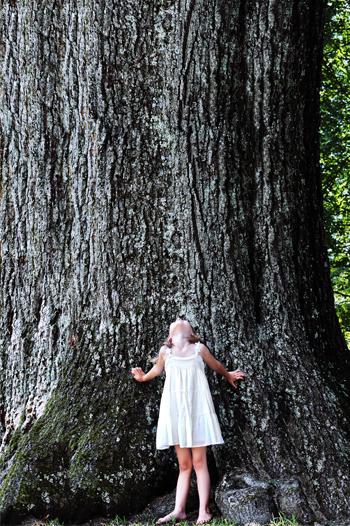How big is that?
Duration/age

Is it smaller or bigger? Will it fit or not? How will I know if it fits in the box?
When you are doing things with your child point out the different sizes of objects. Get them to compare them to things that they know are really big, like an elephant, or really small, like an ant.
Which is taller - the building with 100 windows or the tomato plant?
Would an ant’s feet be smaller or bigger than yours?
Talk about the different ways you can work out how big something is. You can measure it using a ruler or a measuring tape, count how many there are or read the measurement on the side of a packet or label.
Your shoe is bigger than Tom’s. You wear size 5 and he wears size 3.
This chip packet has 10 small packets in it, but that one only has 5.
As you talk with your child, group and compare objects by size. You can sort into small, medium or large. You can also sort by weight. Can you estimate which is bigger or smaller just by looking? Or do you need to measure them?
Materials you will need
- Ruler
- Tape measure
- Your eyes and hands
- Scales
- Everyday things
Skills this activity improves
Why does this matter?
As you explore with your child what you have noticed they are learning about measurement and number and the different ways we compare size. Size can be compared using volume, capacity, mass, time and temperature.
By estimating how much a container can hold your child is exploring the different language and tools we use to compare and measure. If an object is solid or big, you could use number and counting to talk about how many there are, compared to how you talk about lots of small objects.
When you talk about small objects you don’t use number or counting. Instead you can talk about weight or the number of packets.
What does this lead to?
Exploring the different ways we measure objects encourages children to problem-solve and to notice similarities and differences.
When children can identify what is the same about an object they will learn how to use the same solution for more than one type of problem. This is the beginning of problem-solving.
Language to use
- Big, little, small, huge, enormous, tiny
- Tallest, shortest
- Small, medium, large
- More, less
- Ruler, measuring tape, scales
- Fit, room, space, capacity
- Measure, number, size
- Full, empty
Questions to use
- Which one is bigger? Which one is smaller?
- Could a tall giraffe squeeze through a dog door?
- Can an elephant fit in the baby’s seat in the car?
- Which one has more?
- Who has bigger feet?
- Are long pants the same size as shorts?
Useful tips
- You might also like to take a look at the activities How many do you think are in there? and How tall am I?.
- It can be hard for younger kids to understand abstract concepts. When comparing size start with things that they know well and can hold and see.
- Remember to talk to your child in your home language.
More ideas
- Go on a size hunt around the house.
- Use the kitchen scales or bathroom scales to weigh and measure different objects.
- Create a family height chart.
Variation by age
Birth to two year olds
- Set up a big and small bucket. Sort the toys by size into either the big or small bucket.
- When you set the table to eat ask your child to help find big or little things.
- Watch this clip Dear Zoo and read You'll Soon Grow into Them, Titch.
Three to five year olds
- Read the story of The Three Bears.
- When you are shopping point out the different weight and size of objects.
- Set up a threading string with small, medium and large objects for threading.
- See how many objects you can fit inside differently sized jars.
Questions to ask
- Which one is bigger? Which one is smaller?
Questions to ask
- Which container will hold more?
- Will it hold more if the object is smaller?
- Which one is bigger? Which one is smaller?
Language to use
- Big, small, medium, large
Language to use
- Big, little, small, huge, enormous, tiny
- Tallest, shortest
- Small, medium, large
- More, less


